
Global pattern upheaval triggers come-and-go summer for Canada
The Weather Network's official 2023 Summer Forecast reveals what Canadians can expect for the heart of the summer season.
Goodbye La Niña, hello El Niño!
La Niña has been the dominant driver of our seasonal weather patterns for the past three years. However, the global pattern is now in a state of upheaval as we are seeing a rapid transition to what appears to be a rather significant El Niño event. What does that mean for the upcoming summer season?
Our summer forecast for the months of June, July, and August calls for a "come-and-go" summer across Canada. While we will see periods of hot and dry weather, the heat will be broken up at times by shots of cooler weather.
Overall, a cooler summer is expected compared to the past few summers, especially across the eastern half of Canada. However, we will still see some lingering effects from La Niña with periods of hot weather, especially across western Canada.
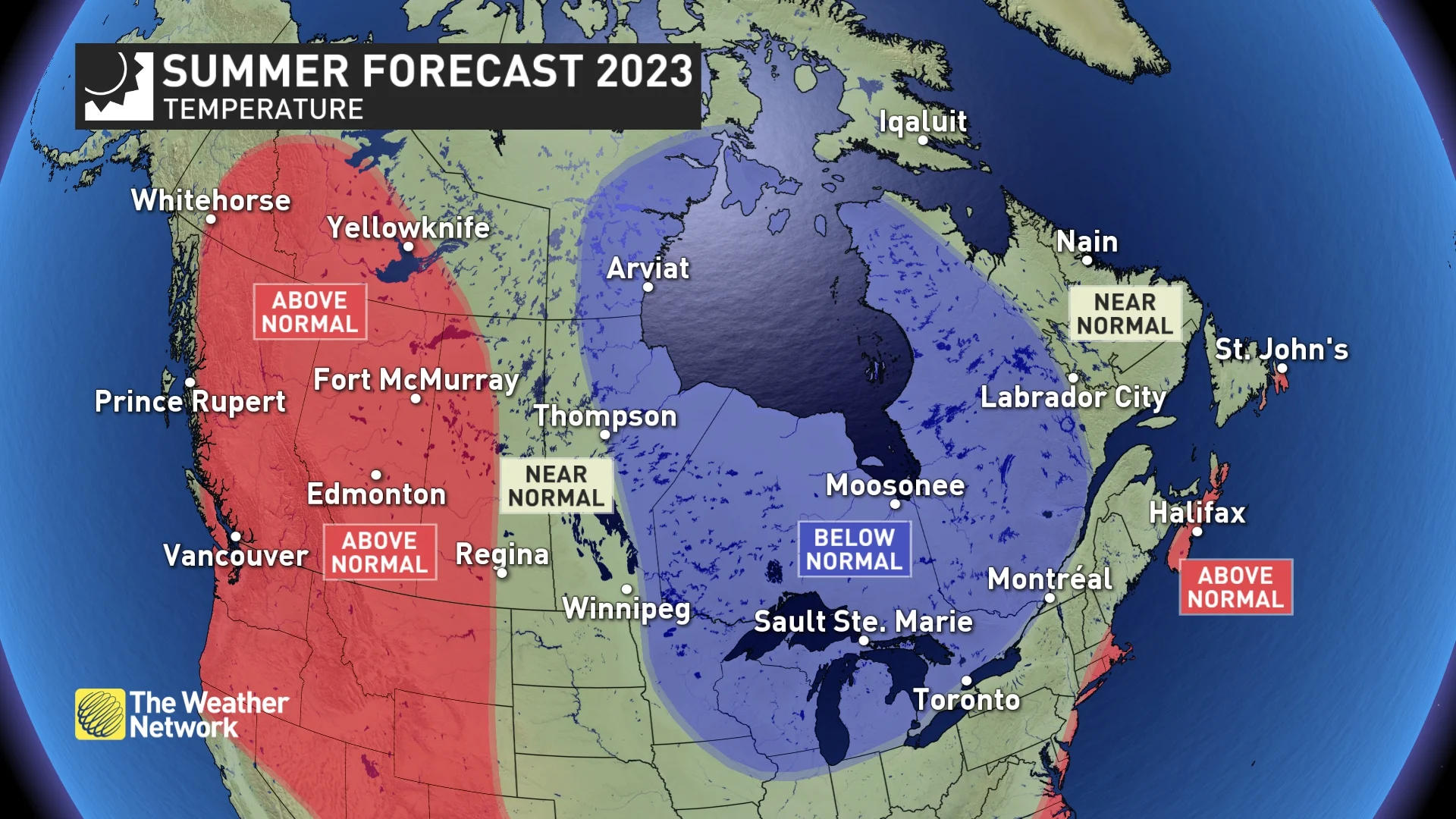
The Weather Network's 2023 Summer Forecast: Canada's Temperature Outlook
Drought is a concern in some areas this summer since the dominant storm track is expected to be primarily south of the international border. However, the changeable pattern should result in stormy conditions at times and reduce the risk of widespread, persistent drought conditions once we get into the heart of summer.

The Weather Network's 2023 Summer Forecast: Canada's Precipitation Outlook
Below is a more detailed look at the conditions that we expect across Canada this summer:
British Columbia
A very warm summer is expected across the province, but we do not anticipate that the heat will be as relentless as what we have seen during many recent summers. The heat should break at times with a few periods of cooler and unsettled weather.
The risk of wildfires will continue to be a major concern, but we are cautiously optimistic that the heart of the summer will include periods of much-needed rain and result in near-normal rainfall for the summer with localized areas of above-normal rain totals.
WATCH: How a bubbling El Niño will impact summer in B.C.
Alberta
A hot summer is expected across the province, but we do not expect a relentless scorcher, as cold fronts will bring relief from the heat at times.
We will continue to have a risk of wildfire smoke as we get deeper into summer, but we are cautiously optimistic that the worst of Alberta’s fire season is behind us. We will see some significant rain (and thunderstorms) at times, and this should result in near-normal precipitation totals for much of the province.
WATCH: Will drought conditions reach the Prairies this summer?
Saskatchewan
A warm summer is expected across the province, with above-normal temperatures forecast across the western half of Saskatchewan and near-normal temperatures across the eastern half of Saskatchewan. The entire province will see periods of hot weather, but cold fronts will bring periods of cooler weather at times, especially across eastern areas.
Drier than normal conditions are expected across northern Saskatchewan, but southern areas are expected to see near normal rain totals. Strong to severe storms are likely at times, which is typical of the region during the summer.
However, keep in mind that summer precipitation is notorious for wide ranges in totals over very short distances, with a risk for localized flooding in close proximity to places that are experiencing drought conditions.
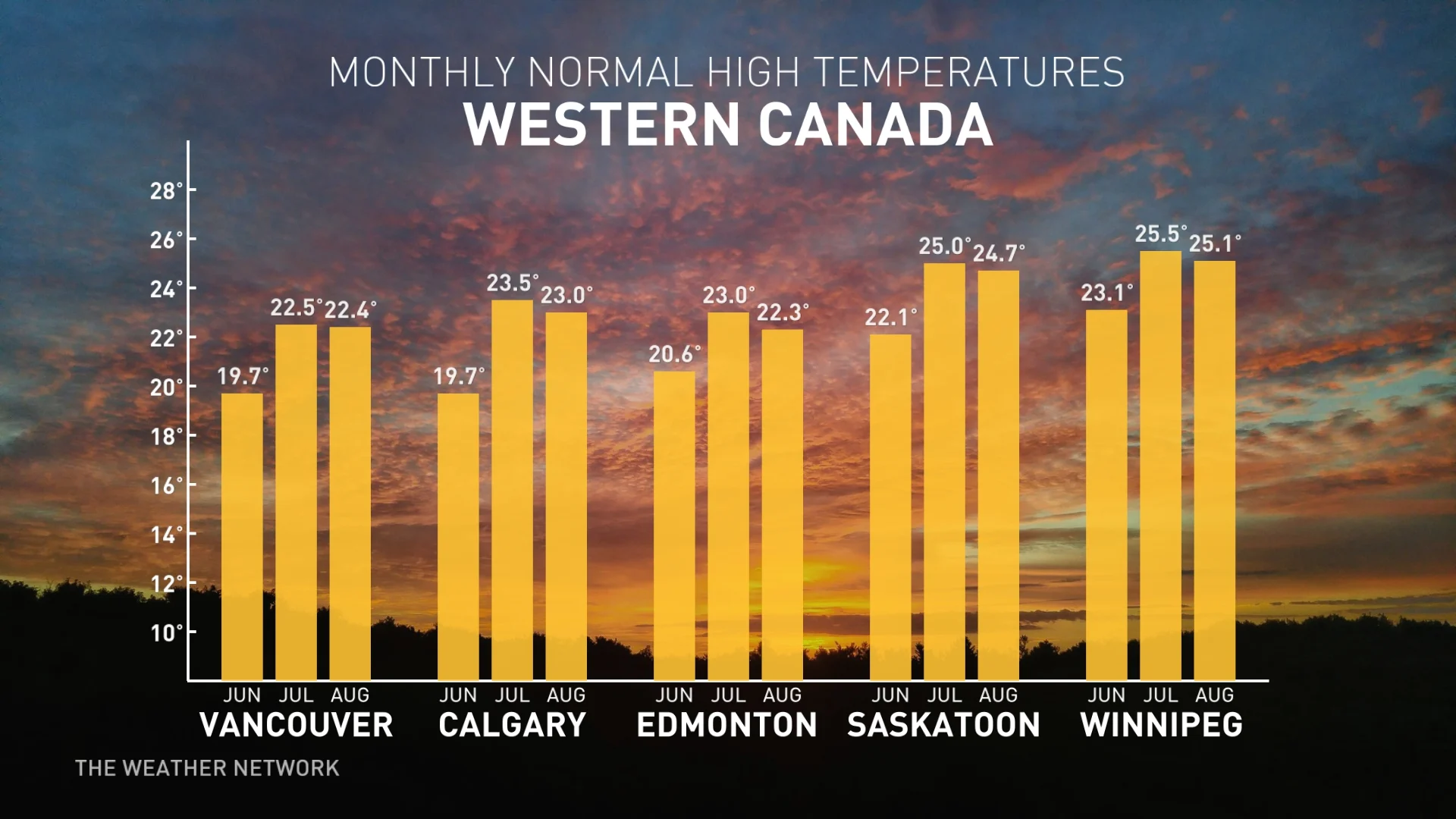
Monthly temperature averages for major cities across Western Canada
Manitoba
A seasonal summer is expected across much of southern and western Manitoba, but cooler than normal temperatures are expected for northeastern parts of the province and near the Ontario border east of Winnipeg. Changeable temperatures are expected across the province, with periods of hot weather that will be offset by periods of cooler weather.
Drier than normal conditions are expected across most of Manitoba, but southern areas are expected to see near-normal rain totals. The anticipated dry conditions across northern areas raise concerns about wildfires, but the combination of less heat and showery weather at times should help reduce the fire risk.
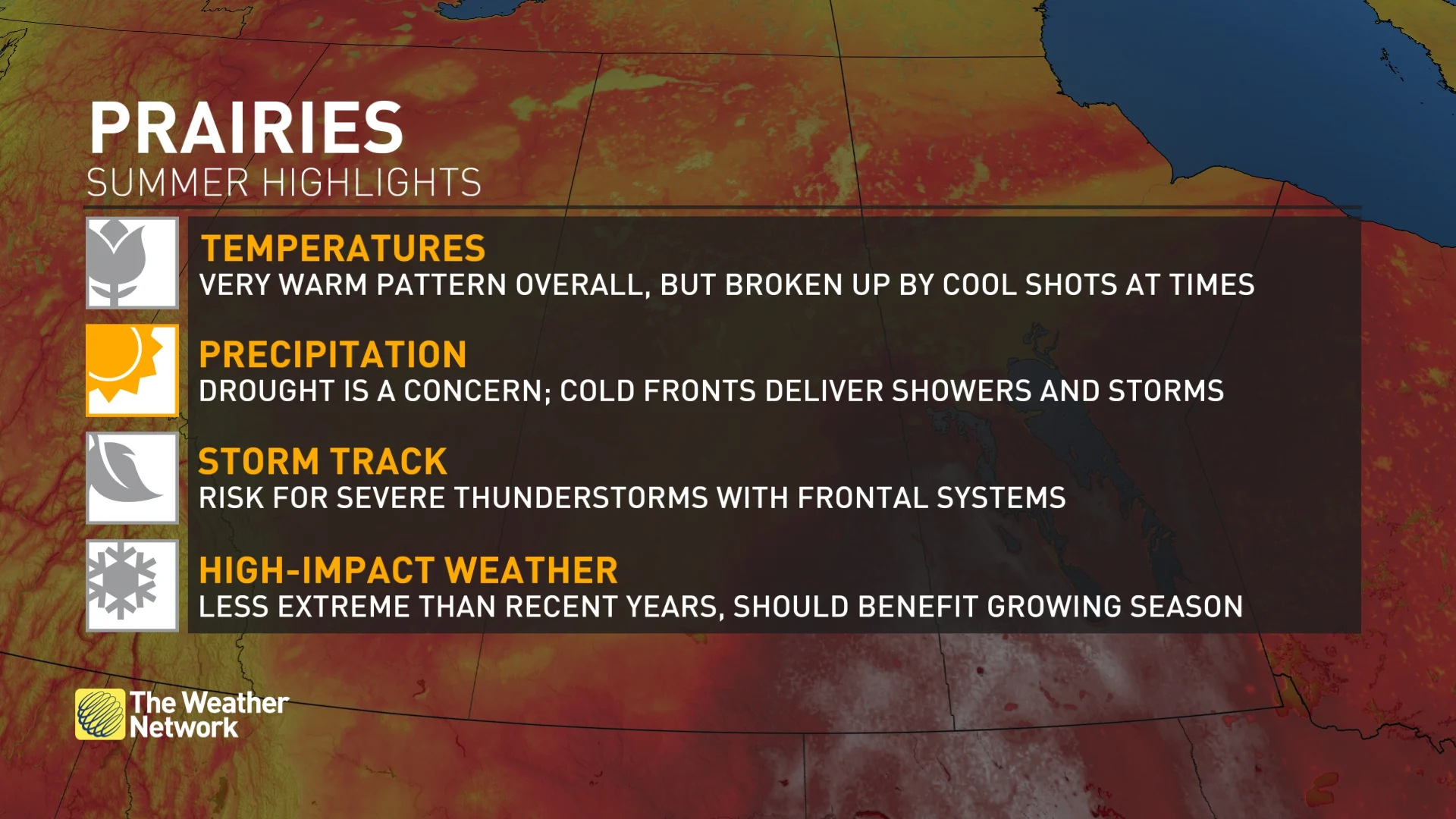
2023 summer weather highlights for the Prairies
Ontario
A changeable summer is expected across most of Ontario. While there will be periods of hot weather, the heat will lack commitment, especially in the northern parts of the province. Frequent cold fronts will bring periods of cooler weather, which should more than offset the periods of hot weather, resulting in slightly cooler than normal temperatures for the season.
Across the southernmost areas (near and south of the 401), the back and forth swings in temperatures should result in near normal temperatures.
We expect fewer days with 30-degree temperatures during the heart of summer compared to what we have seen during many recent summers. However, there are preliminary indications that we will see a strong conclusion to the summer season as we head into the month of September.
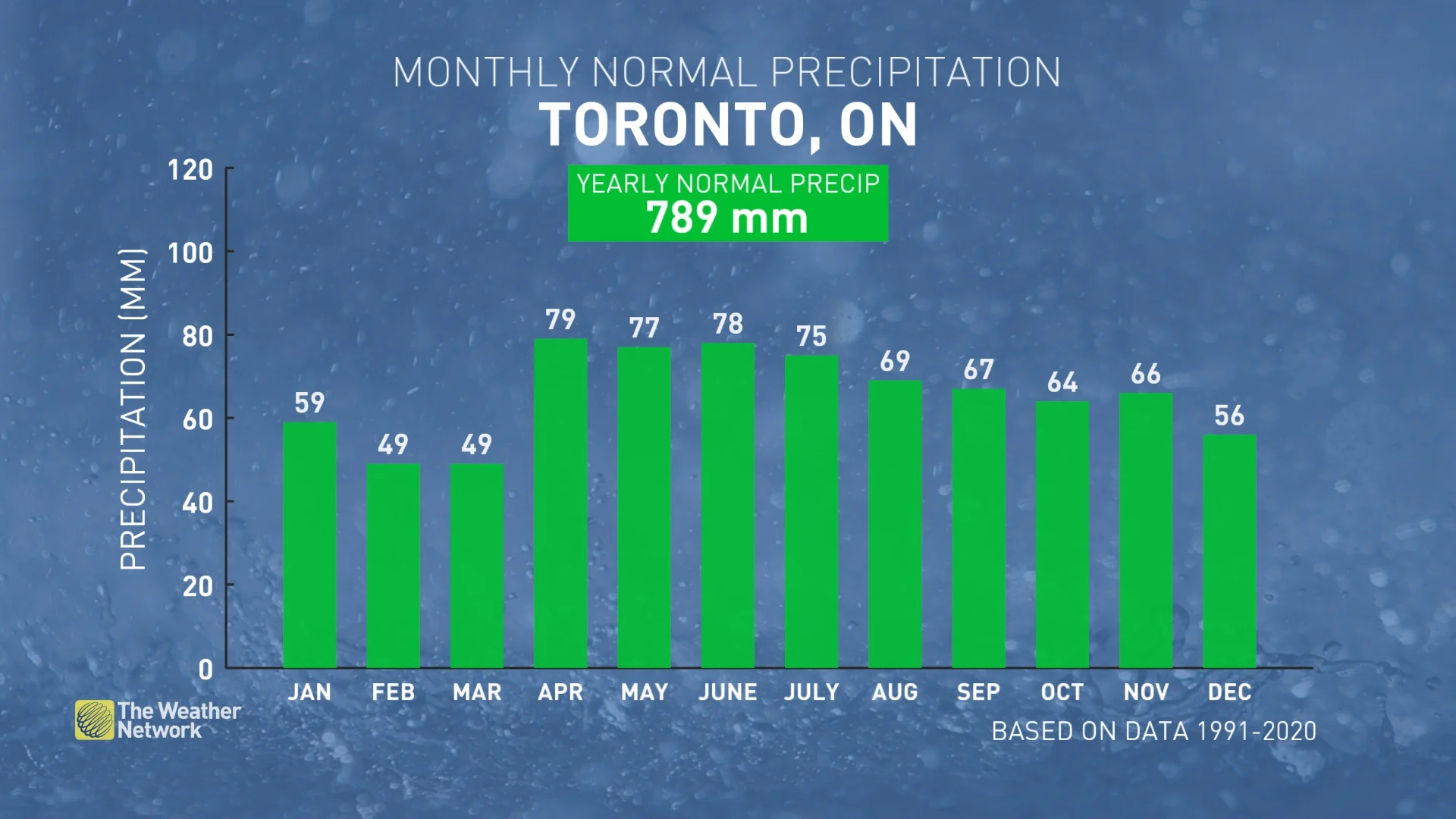
Toronto's summer precipitation averages
Below-normal rainfall totals are expected across most of northern Ontario, while southern parts of the region should see near-normal or slightly above-normal rain totals.
WATCH: It could be love it or leave it kind of summer in Ontario
Quebec
This summer is expected to be cooler than the past five summers, which were much warmer than normal across most of the province. This year, we expect near normal temperatures across eastern Quebec and the southernmost parts of the province and slightly cooler than normal temperatures elsewhere.
While there will still be periods of hot weather, fewer days with 30-degree temperatures are expected during the heart of summer compared to what we have seen during recent years. However, we do expect a strong finish to the summer season as we head into September.
Near-normal rain totals are expected for the summer across most of the province, but northwestern parts of the province could tip to the dry side of normal and southernmost areas could tip to the wet side of normal.
WATCH: What's contributing to below-normal temperatures for parts of Quebec this summer
Nova Scotia, New Brunswick, and Prince Edward Island
A seasonal summer is expected across most of the Maritimes, but southern parts of the region should tip to slightly warmer than normal temperatures, primarily due to milder temperatures at night, especially during August.
Periods of dry weather are likely, but a stormy pattern at times should result in near-normal or above-normal rainfall totals. We will also keep a close eye on the tropics. While we expect a less active hurricane season compared to recent years, we still have a risk of significant impacts from a tropical system or two.
WATCH: Will rainy weather ruin your summer plans in Atlantic Canada?
Newfoundland and Labrador
A changeable pattern should result in near-normal temperatures overall, but the southeastern part of the province could tip to the warm side of normal, primarily due to milder temperatures at night, especially during August.
Periods of dry weather are likely, but an active pattern at times with a few moisture-laden systems should result in near-normal or above-normal rainfall totals for most of the province. We will also keep a close eye on the tropics. While a less active hurricane season is expected (compared to recent years), we still have a risk of significant impacts from a tropical system or two.
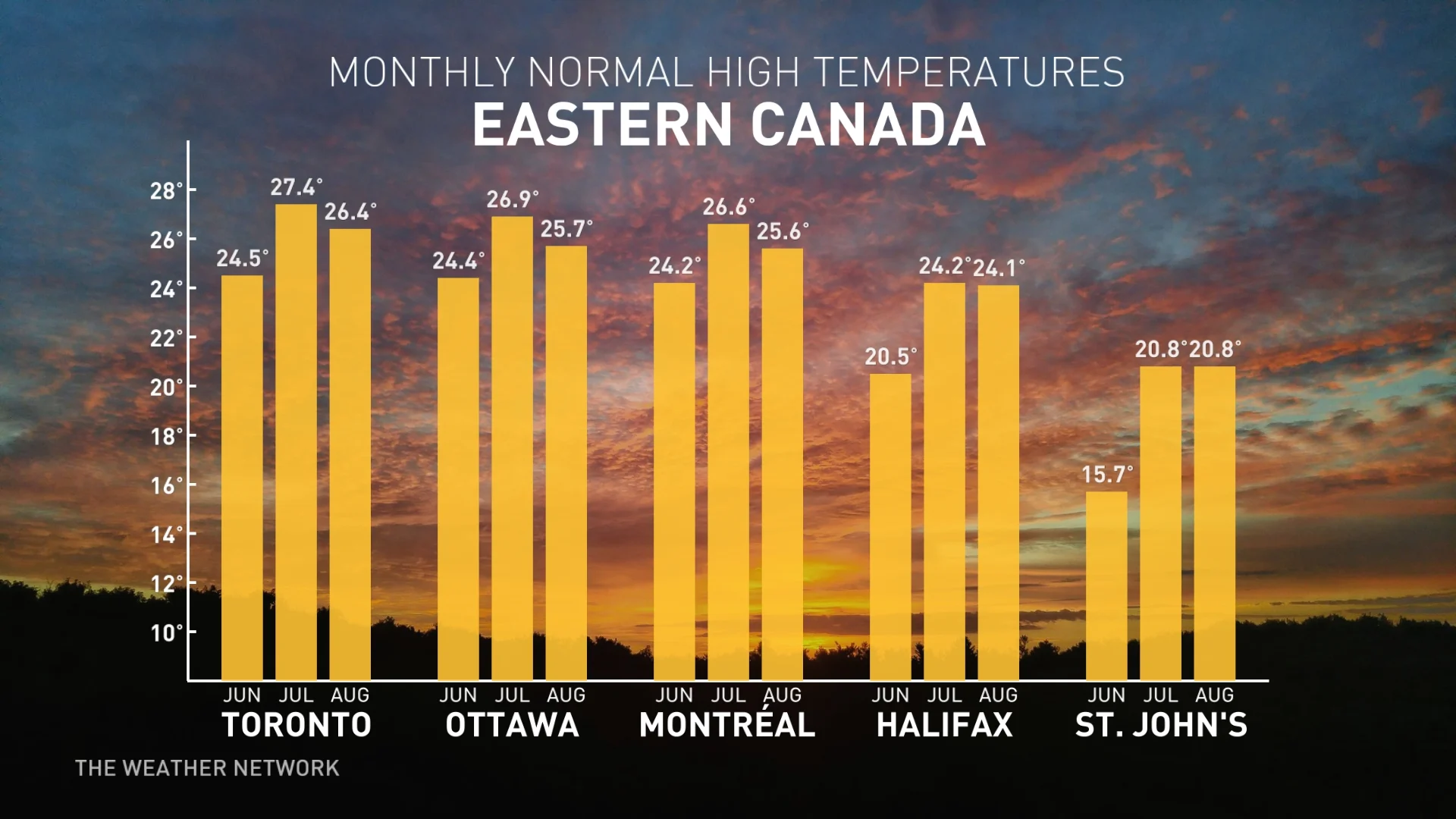
Monthly temperature averages for major cities across Eastern Canada
Northern Canada
Warmer than normal temperatures are expected across western parts of the region, while a cooler summer is expected across eastern parts of the region. A dry summer is also expected across this region, especially west of Hudson Bay. However, the greatest concern for wildfires is in the western parts of the region, where temperatures will be much warmer.
WATCH: See where the wildfire risk sits for the North
Hurricane Season
The upcoming hurricane season is expected to be less active than many recent seasons across the Atlantic and Gulf of Mexico in terms of the total number of storms. Typically, an El Niño pattern is associated with more wind shear in the tropical Atlantic, and those conditions are not as favourable for the development and intensification of storms.
However, ocean water temperatures are warmer than normal both in the tropics and outside of the tropics. It also looks like atmospheric conditions outside of the tropics will be favourable for storms to maintain intensity or even intensify outside of the typical tropical development areas.
Therefore, we expect that the total number of storms will be near the long-term averages and that areas near the east coast of the U.S. and Canada will still be at risk for significant impacts from a tropical system or two during the hurricane season, which runs from June 1st to November 30th.
